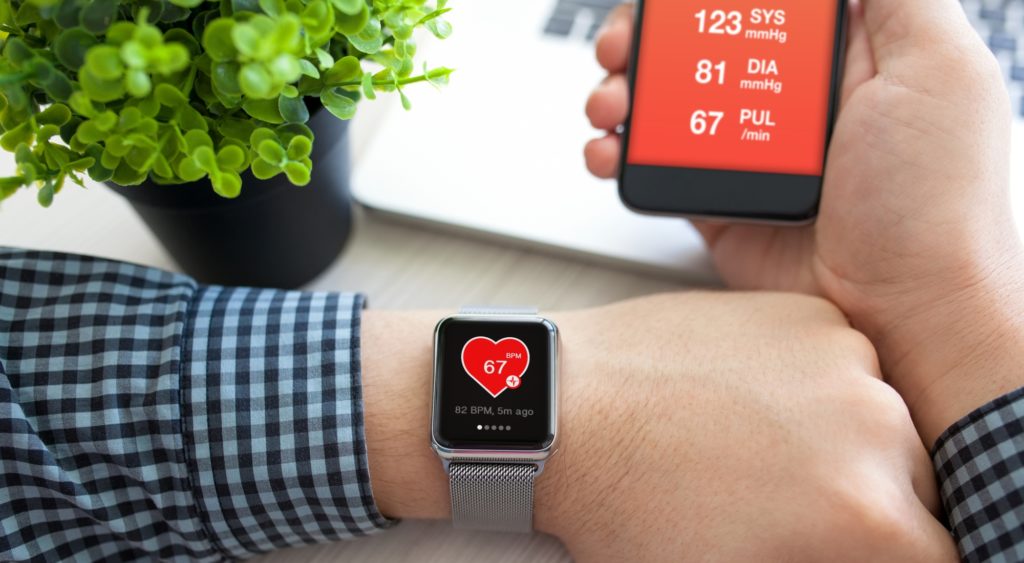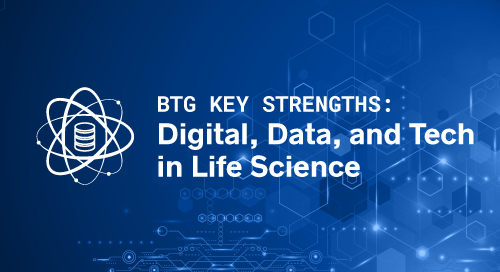
Like many fast-moving, tech powered domains, digital health has gone by a number of different names throughout the years: eHealth, mobile health, health 2.0, and connected health, to name a few. Proponents promise nothing less than a revolution. Digital health, they say, can deliver more efficient, personalized, and accessible healthcare, at lower cost, with better outcomes.
So what is digital health? And, more importantly, what opportunities does it offer today’s health and life science companies?
In this edition of Business Talent Group’s Behind the Buzzword series, we examine both the promise and the hype.
What is digital health?
From Fitbits to smart pillows and Electronic Health Records (EHRs) to virtual doctors, examples of digital health are everywhere. They are united by the common goal of using technology to improve patient outcomes, reduce inefficiencies, and create useful, effective health services that weren’t possible before.
The technologies behind digital health include connected devices, sensors, and wearables that enable people to track, analyze, and act upon real-time information about their well-being.
They also include applications that facilitate the sharing of health information, whether between patients and their healthcare providers or among groups of patients who suffer from the same condition.
They include administrative systems that securely streamline the substantial amount of documentation that healthcare providers must execute. And they include data-driven systems that promise to empower insurers with insights that can help them make smarter decisions about managing care and costs.
What’s the potential?
According to Global Market Insights, the digital health market is expected to grow by a compounded annual growth rate (CAGR) of nearly 26% over the next several years, topping $379 billion by 2024.
Healthcare payers and providers are excited by the prospect of delivering better care at lower cost and keeping up with the increased consumerization of healthcare.
Life Science companies see an opportunity to increase patient adherence, boost patient engagement, and add billions of dollars in incremental revenue.
And consumers are increasingly interested in technology-enabled health interventions, whether through telemedicine or self-monitoring.
Investment in the space has skyrocketed, as well.
What are the challenges?
By now, it’s clear that digital health presents a number of compelling opportunities. Unfortunately, large-scale success hasn’t always been easy to come by. There’s a lot of noise in the market. The array of stakeholders is difficult to understand, much less coordinate. Companies struggle to define and scope the most promising opportunities. They struggle to develop engaging digital health applications that are as effective in the real world as they are in the lab. And they have limited tools for assessing the value of their digital health investments.
Perhaps not surprisingly, some experts have begun to recommend a reset in expectations—and investment.
On the other hand, it’s become clear that the technologies behind digital health aren’t going anywhere. They will only become more pervasive, with greater adoption and utilization over time. So if health and life science companies want to stay relevant—and really capture the revenue enhancement possibilities—they must make an organization-wide commitment, aligning people, processes, and investments accordingly.
Get the Skills You Need
Thousands of independent consultants, subject matter experts, project managers, and interim executives are ready to help address your biggest business opportunities.
About the Author
More Content by Leah Hoffmann























